VHO - Through archaeological surveys and specimen identification, initial results show that the ancient ship discovered in December 2023 in the coastal area of Cam An ward, Hoi An city dates back to the 14th-16th centuries (Cam An ship).
This is an extremely important marine heritage not only for Vietnam but also for the Southeast Asian region, a testament to the vibrant history of maritime and commercial activities in the East Sea.
In addition, during the investigation and survey, quite reliable information was also discovered about another shipwreck in the Tan Thanh - Cua Dai sea area, opening up many opportunities to search for new shipwrecks in this area.
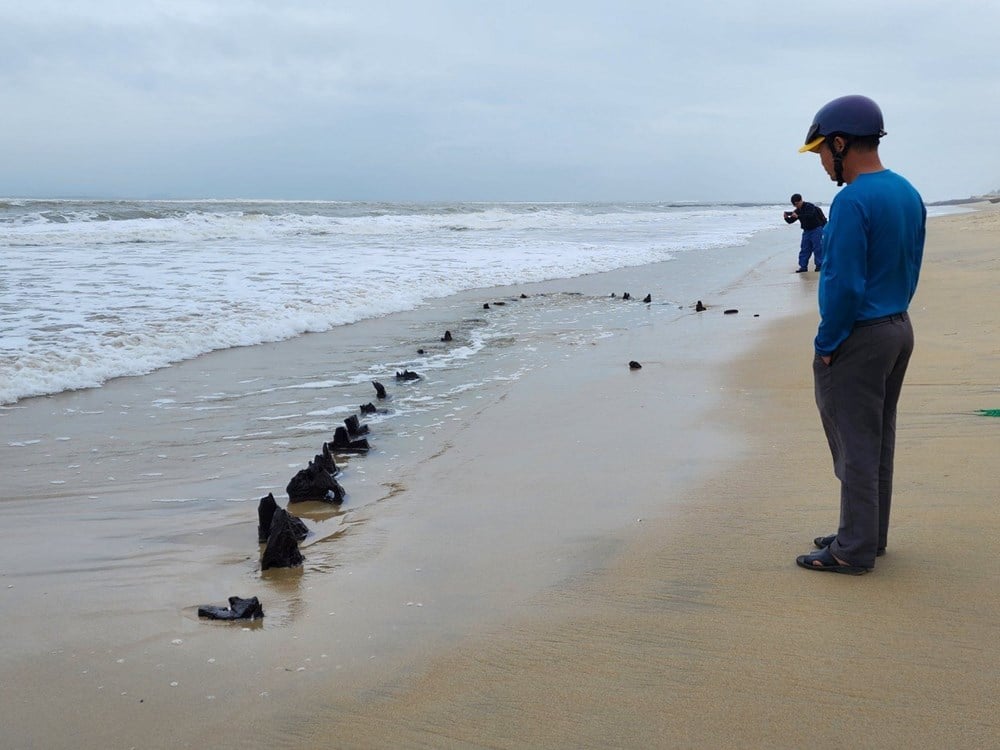
Initial findings
As reported by Van Hoa , on December 26, 2023, waves hit and exposed part of a large wooden ship buried in the sand in the coastal area of Thinh My, Cam An ward.
This location is currently located in the area of the emergency anti-erosion embankment project on Cua Dai beach. This is a ship suspected to be an ancient ship discovered in the coastal area near the shore.
The People's Committee of Quang Nam province has assigned the Hoi An Center for Cultural Heritage Management and Conservation (QLBTDSVH) to preside over and coordinate with other functional units to conduct archaeological investigations and surveys and collect initial samples for analysis at the site where relics were discovered in the coastal area of Cam An ward as a basis for properly assessing the value and current status, and proposing specific and appropriate plans and solutions for the future of the Cam An ship.
The area where the ancient ship was discovered is a very steep slope, with a red stone road (main road) built during the French period running along the current coast and passing through the location where the ship appeared, then running to a promontory about 200m northwest of the ship. This area belongs to Mr. Trum Du's garden land.
Due to the strong erosion of the coastline, hundreds of meters deep, the people in this area also had to move. Over time, due to storms, floods, and waves, the sand and soil were washed out to sea, so the wooden logs arranged in the shape of a shipwreck were revealed.
This shape appears after the water rises, the waves hit near the shore. In the afternoon of the first days of the lunar month, the high tide will cover the traces of these wooden stakes. At present, the ship has been covered again under the sea. The red stone road is also clearly shown on the map of Tourane (1905) .
Overlaying layers of maps from different periods and satellite images onto Google Earth shows the ship's position at different times from the water's edge, along with the memories of local people, clearly showing the trend of increasingly strong sea erosion from the 20th century to the present. On the other hand, it confirms that the ship's position was not only deep under the sand dunes, but in 1905, the ship could have been about 700m - 800m from the water's edge.
And so, whether the ancient Cam An shipwrecked or abandoned, the time of the shipwreck or abandonment is likely earlier than 1905, at least a few centuries. Also according to some locals, this area used to be a sandbar so there may have been many shipwrecks.
Also in this area, occasional waves also reveal on the beach many pieces of ceramics such as bowls and cups of Chinese origin dating from around the 18th-19th centuries.
Because the entire ship was buried in the sea sand, determining the location of the ship took a long time and was done with many methods and forms such as dry drilling, water drilling, opening trenches, continuously reinforcing the walls with dykes, pumping out water to prevent seawater from flooding and causing landslides, etc.
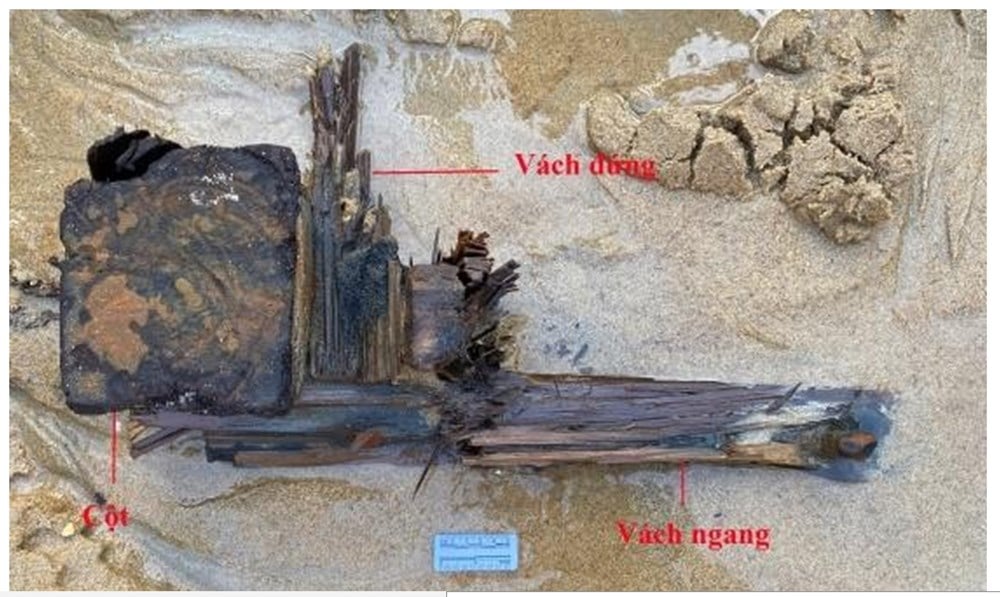
Unique and strange ship structure
Through the survey, many interesting discoveries were revealed according to the structure of the ship. For example, the girder is the horizontal reinforcement structure for the ship, contributing to the creation of the skeleton, tightly connected to the outer planks to form the hull of the ship.
Of the five beams, two are of the "double beam" type, one with a square cross-section close to the hull's edge, followed by a beam with a nearly semicircular cross-section.
This is a very strange structure, never recorded on shipwrecks in the Southeast Asian sea. Although the Cam An ship has not been fully discovered, it is initially identified as having 28 beams, so it is estimated that there may be 12 compartments.
Initial survey shows that the structure of Cam An ship is a traditional East Sea ship, a type of sailing ship that integrates traditional Southeast Asian shipbuilding technology with traditional Chinese shipbuilding technology.
Most likely dated between the 14th-15th century and the 16th century. Regarding the wood used to make the ship, the appraisal results of the Forest Industry Research Institute showed that the Cam An ship was made from three types of wood: Lagerstroemia (used for the beams); Kien Kien wood (planks) and pine wood (deck, compartment partitions).
The wood used to make ships comes from two sources: tropical wood (lagerstroemia, ironwood), temperate wood (pine).
Regarding the ship's structure, the rafters are large, 11.5–16 cm thick, 25–31.5 cm wide, arranged very thickly on both sides of the ship, with uneven spacing of 35–40 cm. This shows that the Cam An ship has a very sturdy skeletal structure.
In addition, the ship also has a “double-ribbon” structure that has never been recorded on shipwrecks in Southeast Asian waters. The structure of the Cam An ship shows some typical features of traditional Southeast Asian ship structures such as the bow (bow keel), the boat has many layers of planks (at least 2 layers), the planks cover the bow, tropical wood as the main structure of the hull and the boat’s skeleton such as Lagerstroemia wood (sang le) as the girder and Kien Kien wood as the planks.
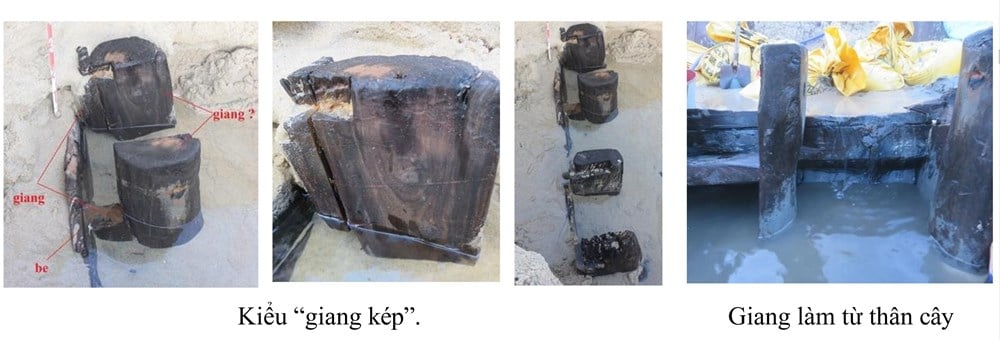
Next to it are some typical features of traditional Chinese ship structures such as cross-bulks, rafters, iron nails, the technique of driving iron nails diagonally at the edge of the planks and using pine wood for the cross-bulks and rafters. With these features, it shows that the Cam An ship is actually a traditional East Sea ship.
Regarding the size of the ship, the port side has been revealed with 28 compartments. If 3 compartments can be created, each compartment is 100 cm long and the deepest compartment can be about 160 cm, then it is estimated that the ship has at least 12 compartments, with a length of more than 17.8 m.
Equivalent to the size of some traditional East Sea ships from the 14th - 15th - 16th centuries. The ship has a bow about 35 cm wide, very large and thick beams on both sides, about 7 cm thick planks, 9 cm thick floor and cross wall... the tight connections between the planks and beams, 9 cm thick floor and cross wall show that the ship has a very solid structure.
To date, more than 20 shipwrecks have been discovered in the Southeast Asian seas, identified as traditional East Sea ships dating from between the 14th and 16th centuries.
Although there are different opinions about the chronological limit or the time when this type of ship began to appear in the middle of the 14th century, the end of the 14th century, or the 15th century, the upper chronological limit or the latest date of this type of ship in Southeast Asia all stop at the 16th century.
The Cam An ship is probably not outside this time frame, most likely dating from between the 14th-15th century to the 16th century.
“The Cam An ship still retains a fairly intact structure that many traditional East Sea, Southeast Asian and even Chinese ships that have been discovered do not have this luck,” the report said.
Therefore, the existence of the Cam An ship is not only a testament to a vibrant maritime history before contact with Western maritime shipping, but is also truly an extremely rare and valuable ancient ship "treasure" of Vietnam that is still preserved quite intact, not only in Vietnam but also in Southeast Asia and East Asia.
Hoi An Heritage Management Center said that due to objective circumstances, there are no C14 dating results yet, therefore, it is necessary to continue to conduct C14 dating analysis to help determine the exact age of the Cam An ship in the flow of history.
Currently, no relics have been discovered in the ship, but the existence of the ship relatively intact is the most important and unique ship heritage in Vietnam, contributing to enriching the cultural heritage treasure at the world cultural heritage of Hoi An.
However, after more than a year of discovery, despite conducting surveys, analyzing and proving many values of this ship, the authorities have not been able to conduct excavation work but only carry out protection zoning.
Up to now, the Cam An ship is still buried in the sea. Mr. Pham Phu Ngoc, Director of Hoi An Heritage Management Center, said that under current conditions, the Center has proposed not to carry out excavation work because the work of preserving and conserving artifacts and promoting the value after excavation is very strict, adhering to scientific standards, requiring a lot of professional conditions, human resources, material resources, infrastructure, etc., and is even very costly.
In actual conditions, if excavation is completed without ensuring good preservation and conservation steps, it will lead to damage and affect archaeological heritage. It will even affect the guarantee of preserving the originality of the relic based on the results of excavation and scientific research.
Regarding this, Mr. Nguyen Thanh Hong, Director of the Department of Culture, Sports and Tourism of Quang Nam, also said that professional agencies have proposed not to excavate the ancient ship Cam An at this time.
In the immediate future, we should preserve the Cam An ancient ship in its original state, protecting it intact under the sea to avoid damage and deformation due to environmental and human impacts. When there are sufficient conditions for preservation and promotion of its value, we will re-investigate, excavate, conduct archaeological research, and propose directions for preservation and promotion of its value in accordance with the nature and state of preservation.
During the survey of the Cam An ship, from information from local people and accessible artifacts, the survey team conducted additional research and discovered the existence of another shipwreck in the Hoi An sea area, the coastal area of Tan Thanh - Cua Dai (abbreviated as Tan Thanh - Cua Dai ship)...
Source: https://baovanhoa.vn/van-hoa/day-co-the-tau-truyen-thong-bien-dong-130884.html





![[Photo] Journalists moved to tears at the Memorial Service for the soldiers who died in Gac Ma](https://vphoto.vietnam.vn/thumb/1200x675/vietnam/resource/IMAGE/2025/5/30/9454613a55c54c16bf8c0efa51883456)
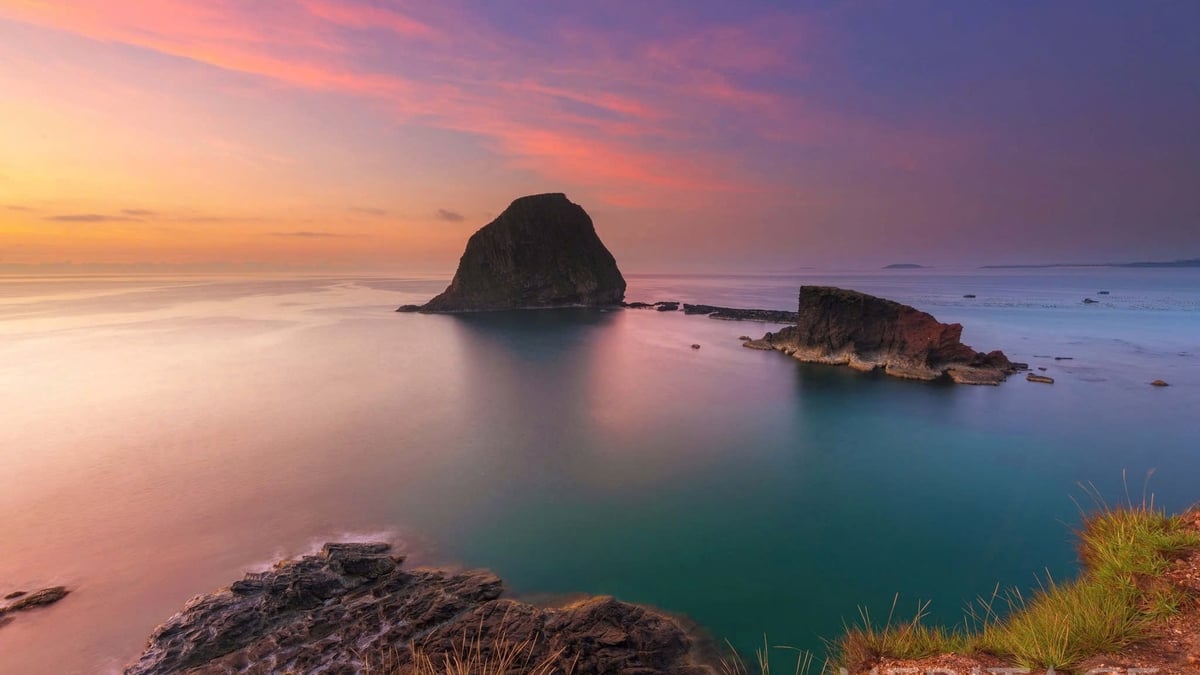
![[Photo] A delegation of 100 journalists from the Vietnam Journalists Association visits the soldiers and people of Truong Sa island district.](https://vphoto.vietnam.vn/thumb/1200x675/vietnam/resource/IMAGE/2025/5/30/0984a986227d4e988177f560d2e1563e)










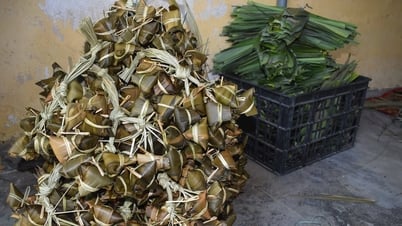





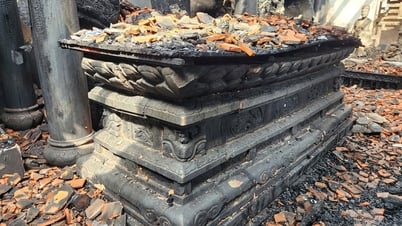
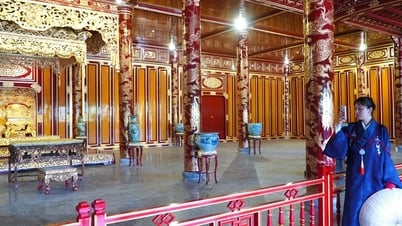
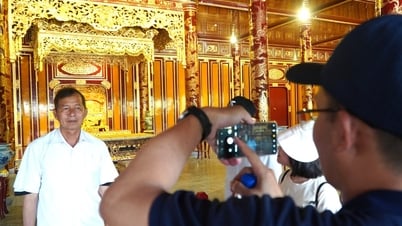
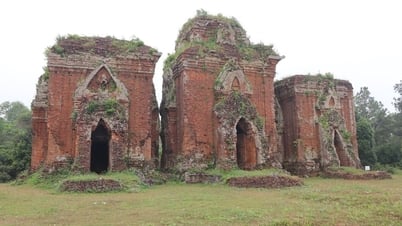

![[Photo] Prime Minister Pham Minh Chinh attends the event "Digital transformation of the banking industry by 2025"](https://vphoto.vietnam.vn/thumb/1200x675/vietnam/resource/IMAGE/2025/5/29/0e34cc7261d74e26b7f87cadff763eae)

























































Comment (0)